Background
Hunt is a scavenger hunt based game that allows users to get outdoors and explore local landmarks together. We want to facilitate outdoor activity that can be experienced individually or with others.
The Project Brief
Enable players to enjoy social scavenger hunts for real objects and locations in their own cities. Create a scavenger hunt game that can be scaled
upward to any supported location and involve any of your friends through social sharing.
upward to any supported location and involve any of your friends through social sharing.
Problem Statement
Our scavenger hunt users need a way to explore their area via an interactive and social game, because they need new and fun activities for themselves and friends in an area that suits them.
We will know this hypothesis to be true when we see the number of users on our application increase in multiple different locations.
Solution
Hunt will allow users to team up or play individually in a variety of physical locations whilst having fun. The application will be straight forward and easy to use whilst on the move, information for clues can be pulled from various sources including Wikipedia. The hunts will be engaging and will indicate the time required so users are comfortable committing to a hunt if they are short on time.
Testing the Hypothesis
During my research I conducted user interviews, surveys and contextual enquiries, these helped me gain valuable insight, some of my key findings were:
- All participants spoke about collaborating rather than competing with their friends
- When exploring new areas, 75% of participants liked discovering the history of the area or surrounding nature.
- All participants spoke about enjoying a challenge and being 'bored' by repetition
Conducting research and visualising it in this way helped me to empathise with my users and understand what is enjoyable to them about scavenger hunts.
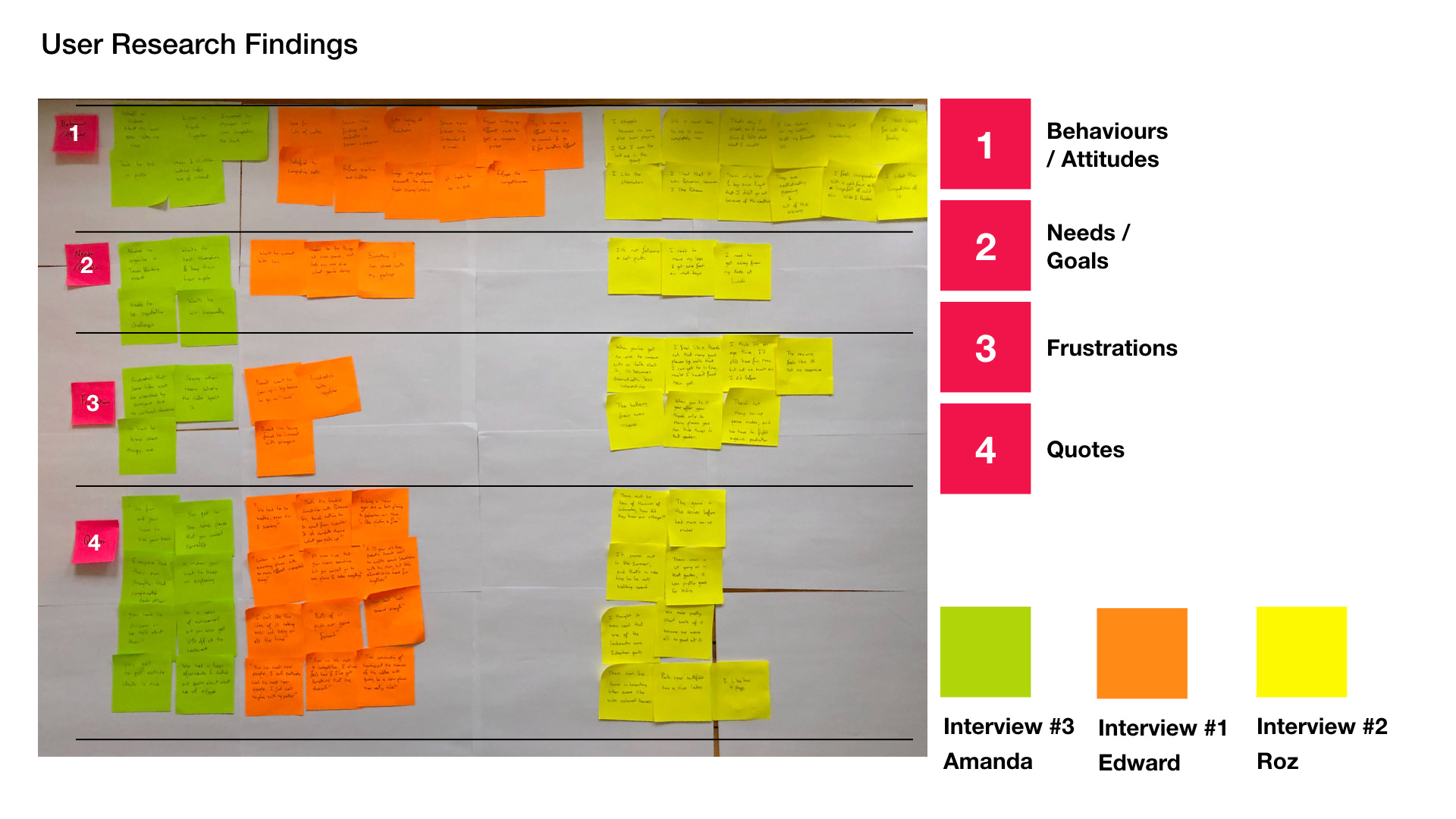
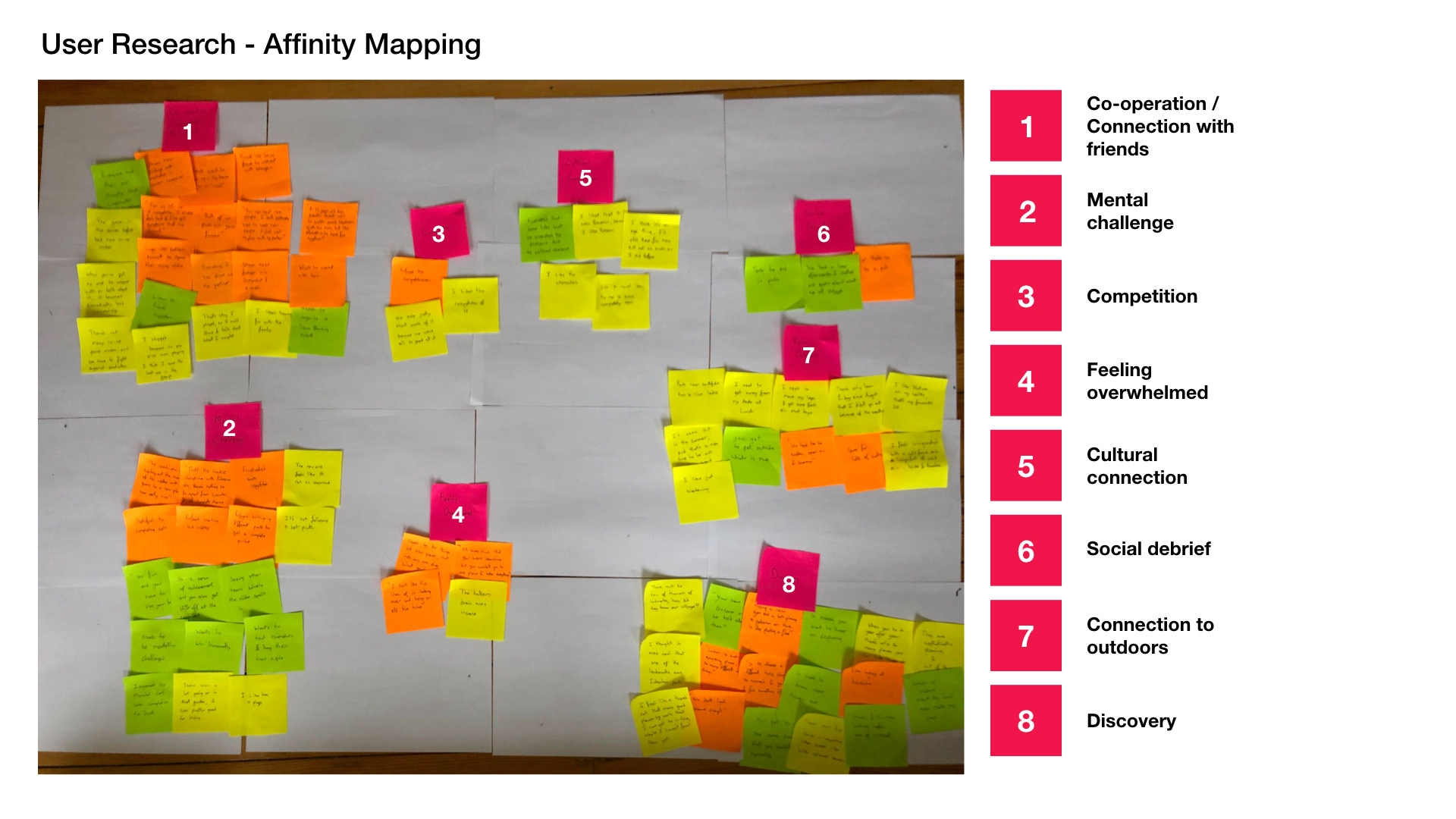
User Personas, Journey's & Flows
To help bring my research to life and guide my design process for the rest of the project, I developed the following user personas, journey's & flows. This activity was an essential part of the design process for me, and kept me connected to the human element of my application.
I found mapping emotions on the user journey particularly useful as it helped me to visualise areas to focus on improving.
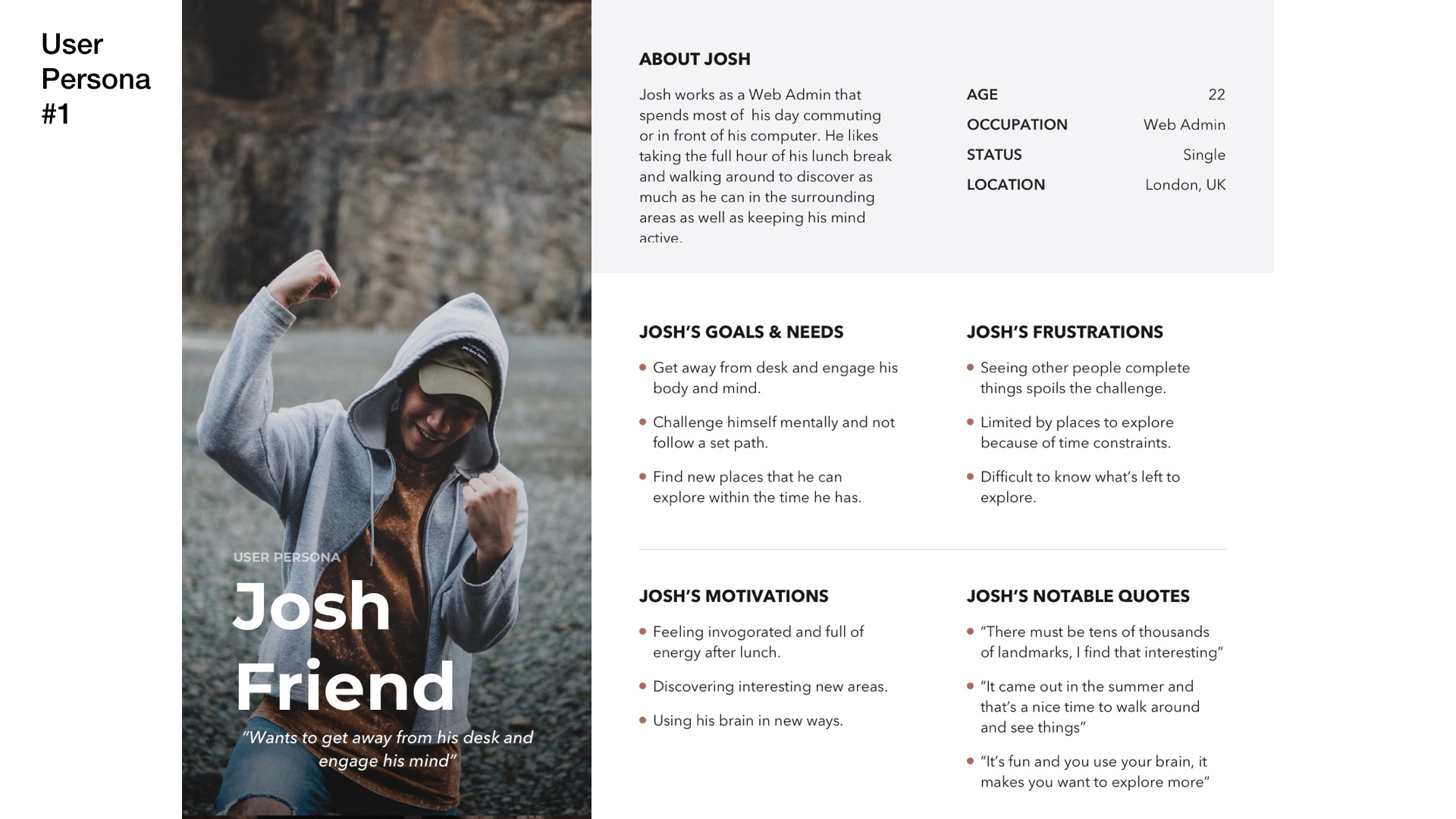
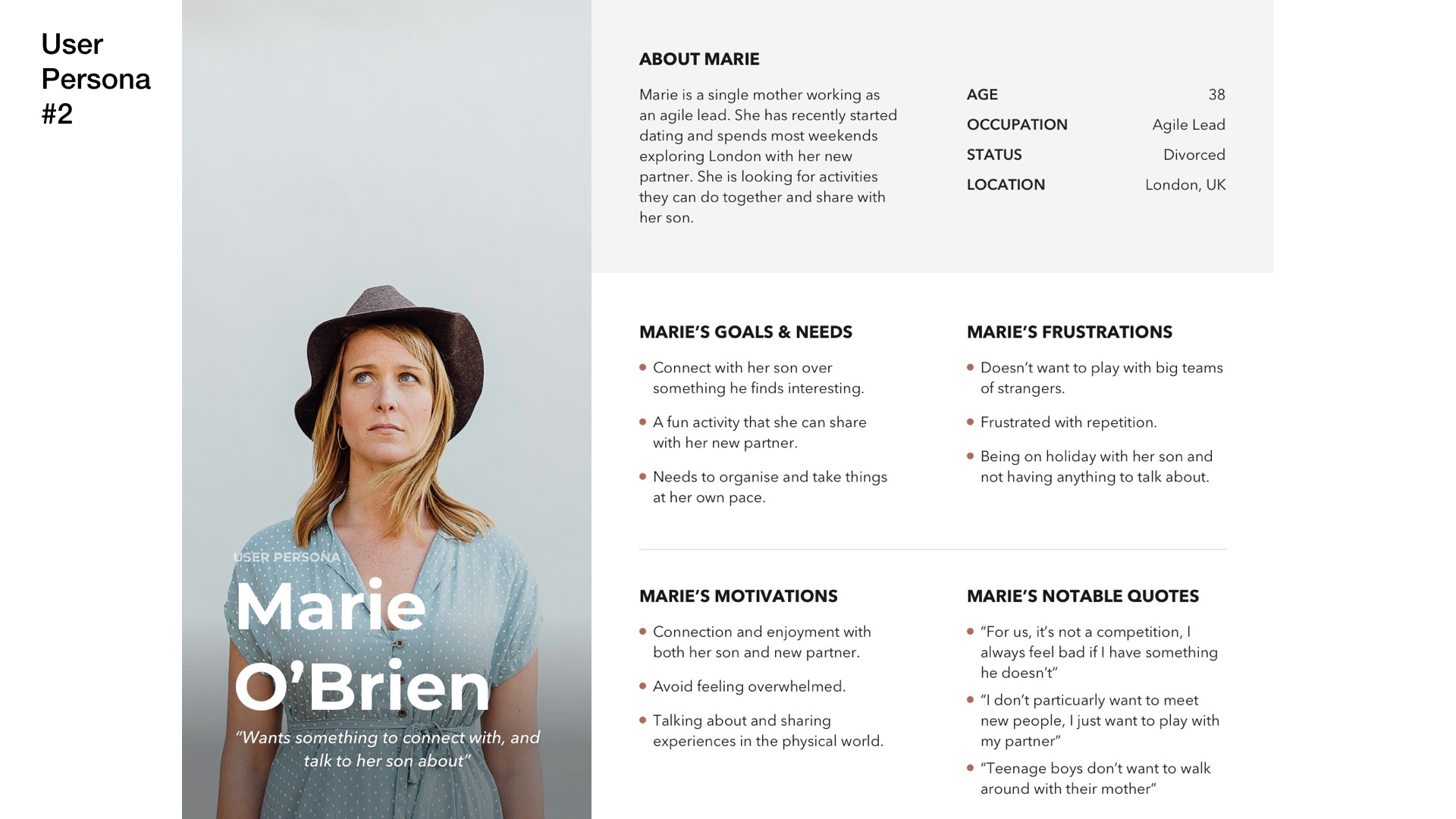
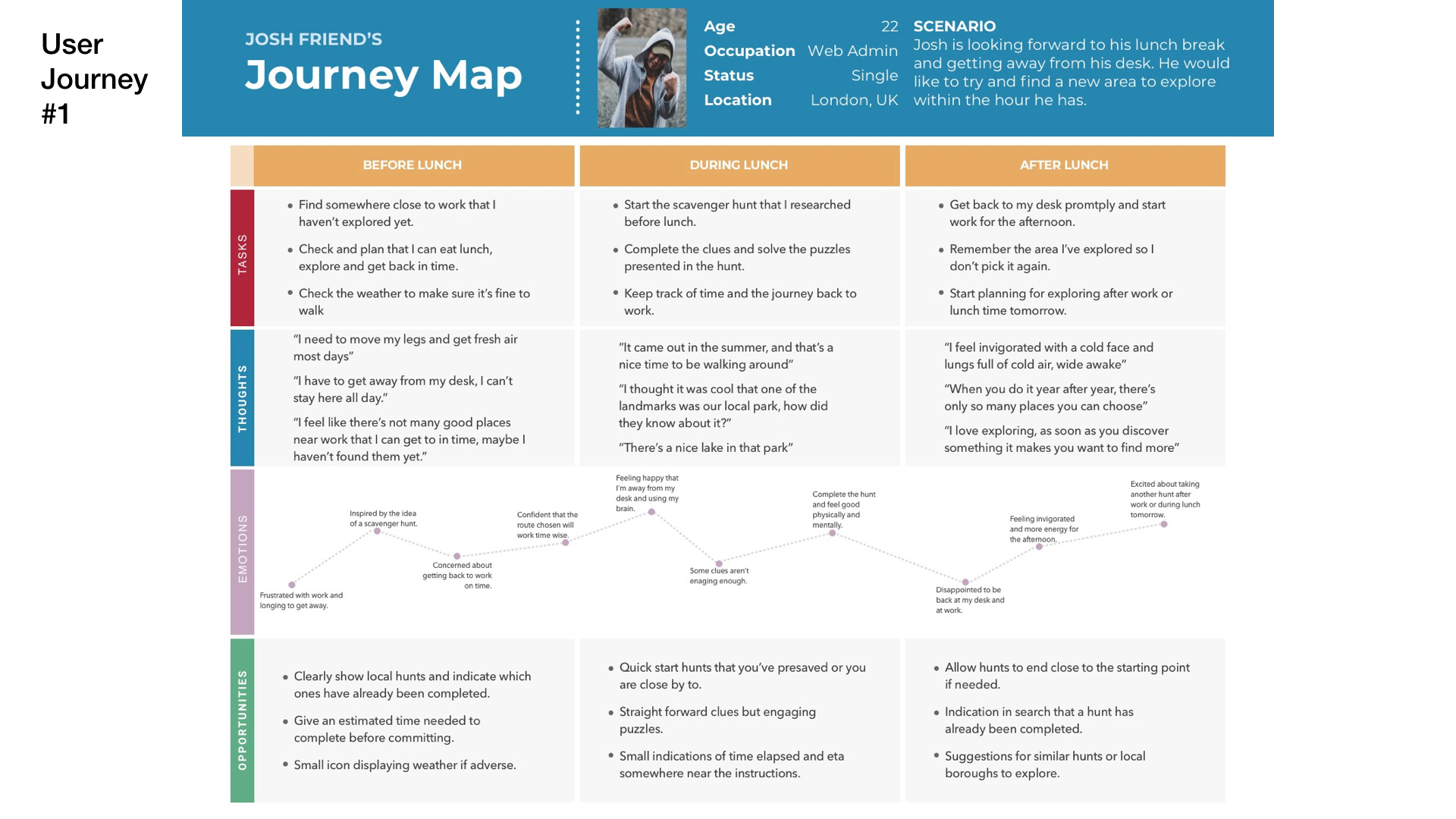
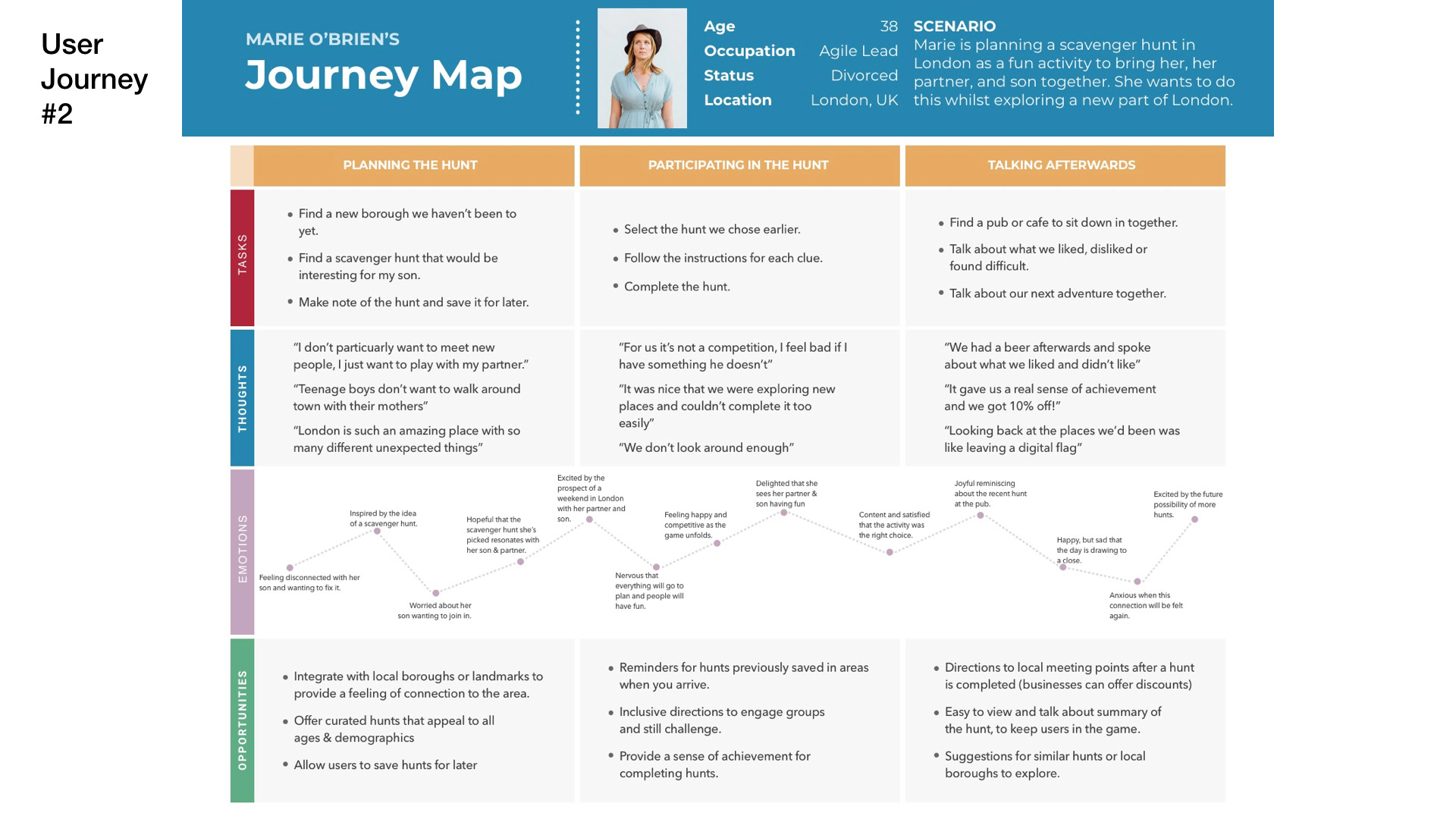
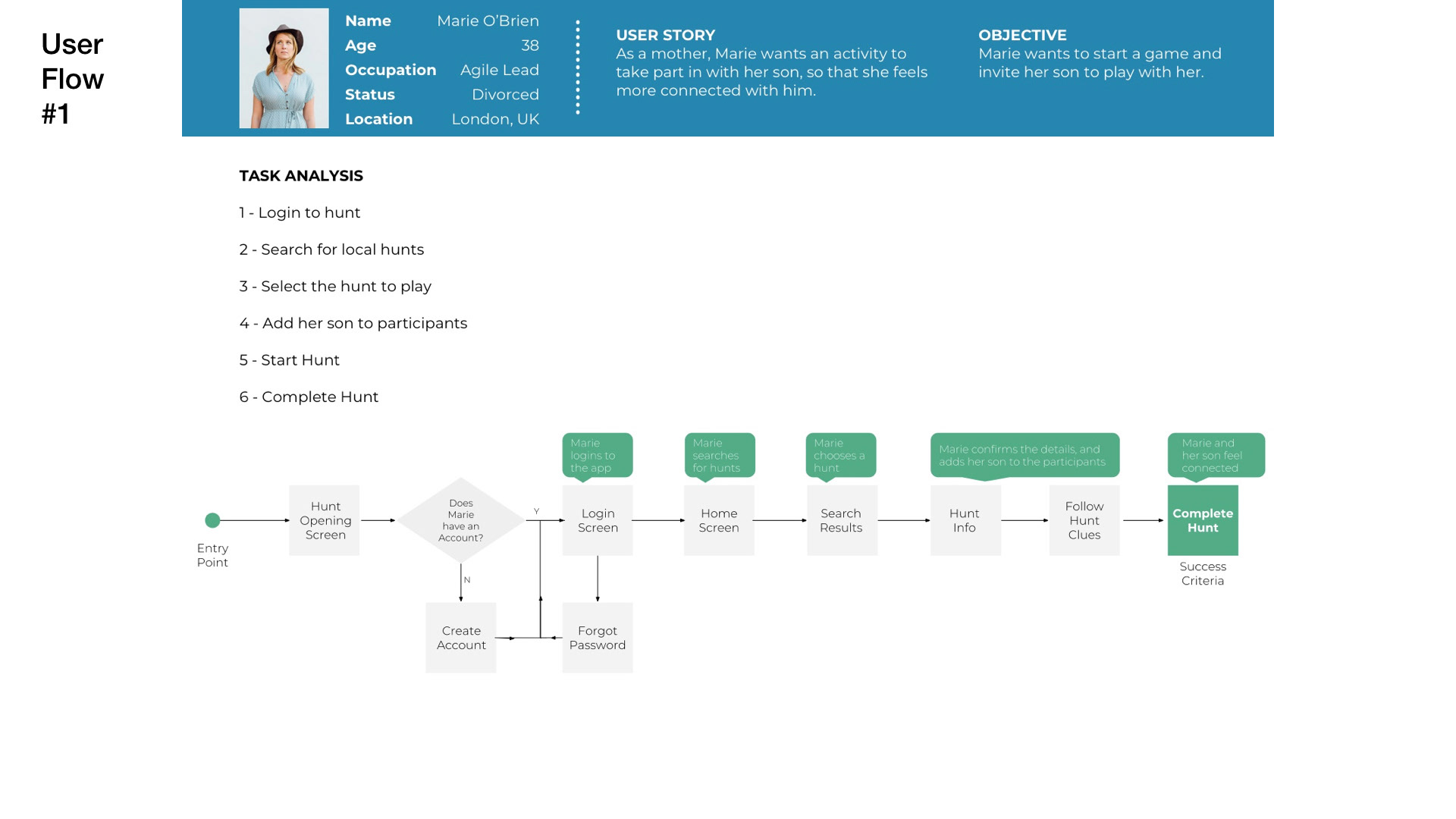
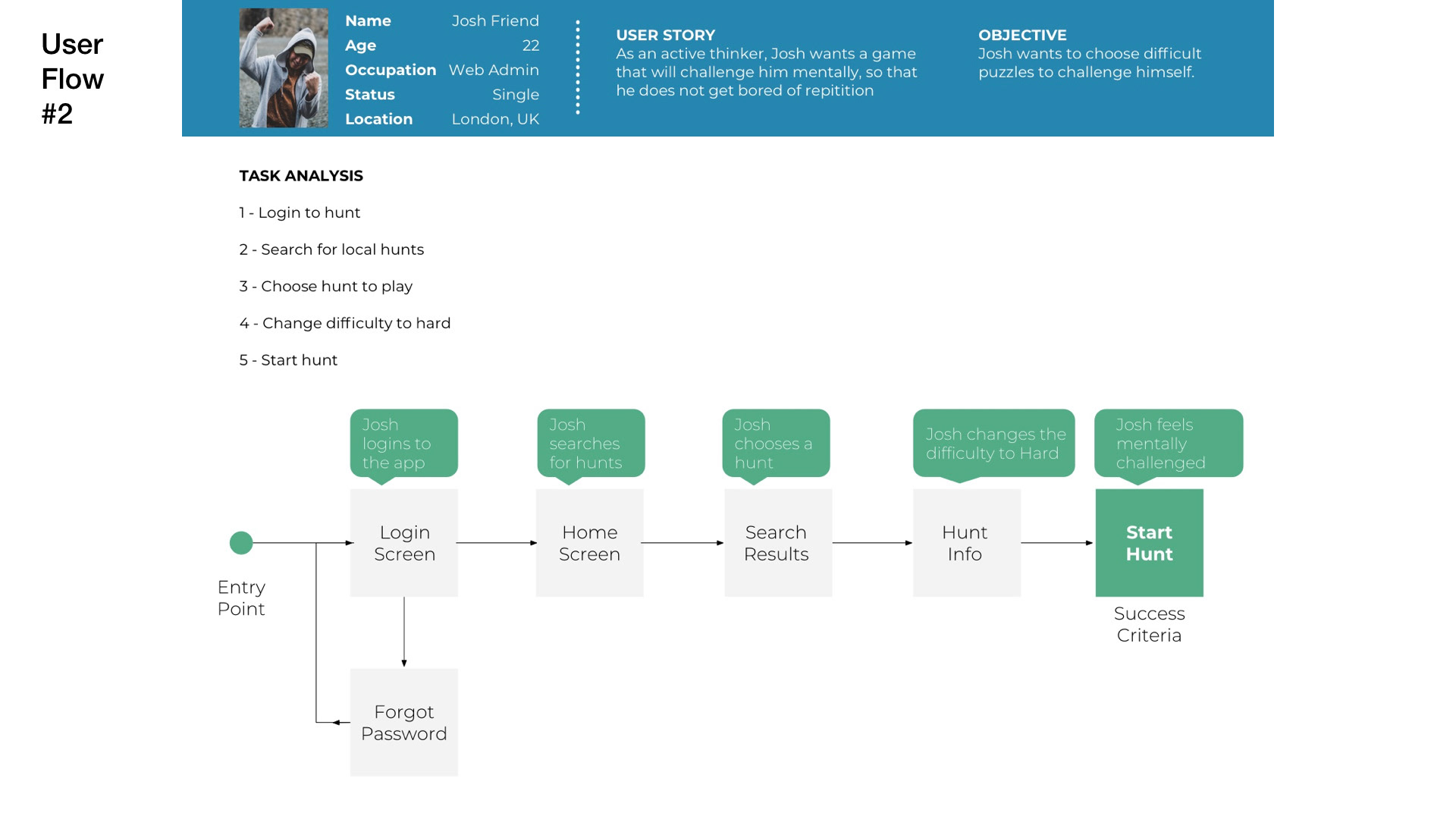
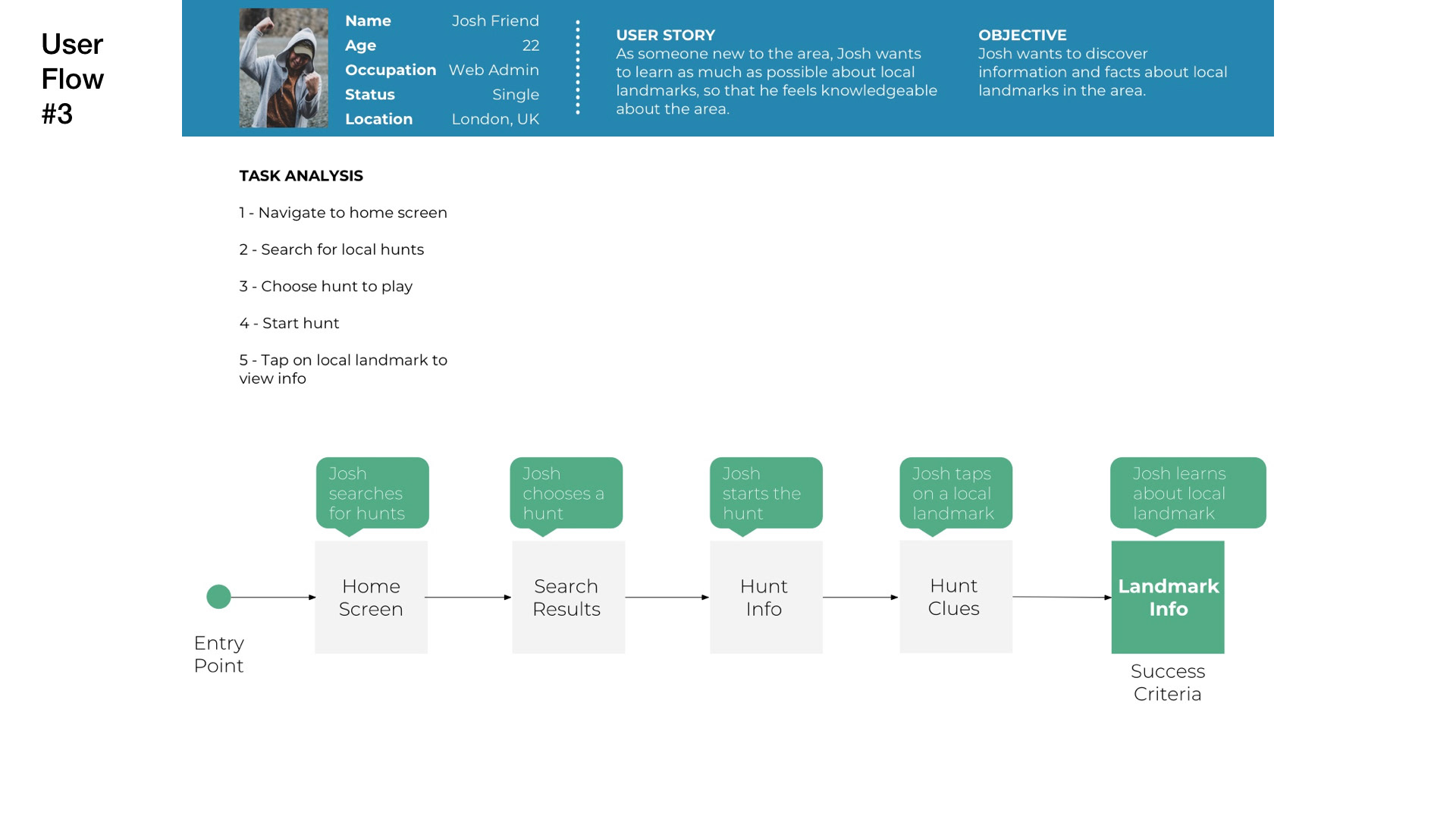
Wireframes & Evolution
Keeping my user flows at the heart of my designs, I began with paper prototyping and evolved the designs across several iterations and different levels of fidelity. The progressive iterations of my design were moulded by the feedback I received from my usability tests which I conducted both in-person & remotely.
One area that I did not feel went well with my wire-framing, is that I quite often settled for a solution and iterated on that without testing alternatives. In the future I will push myself to develop more solutions before settling on a path forward.
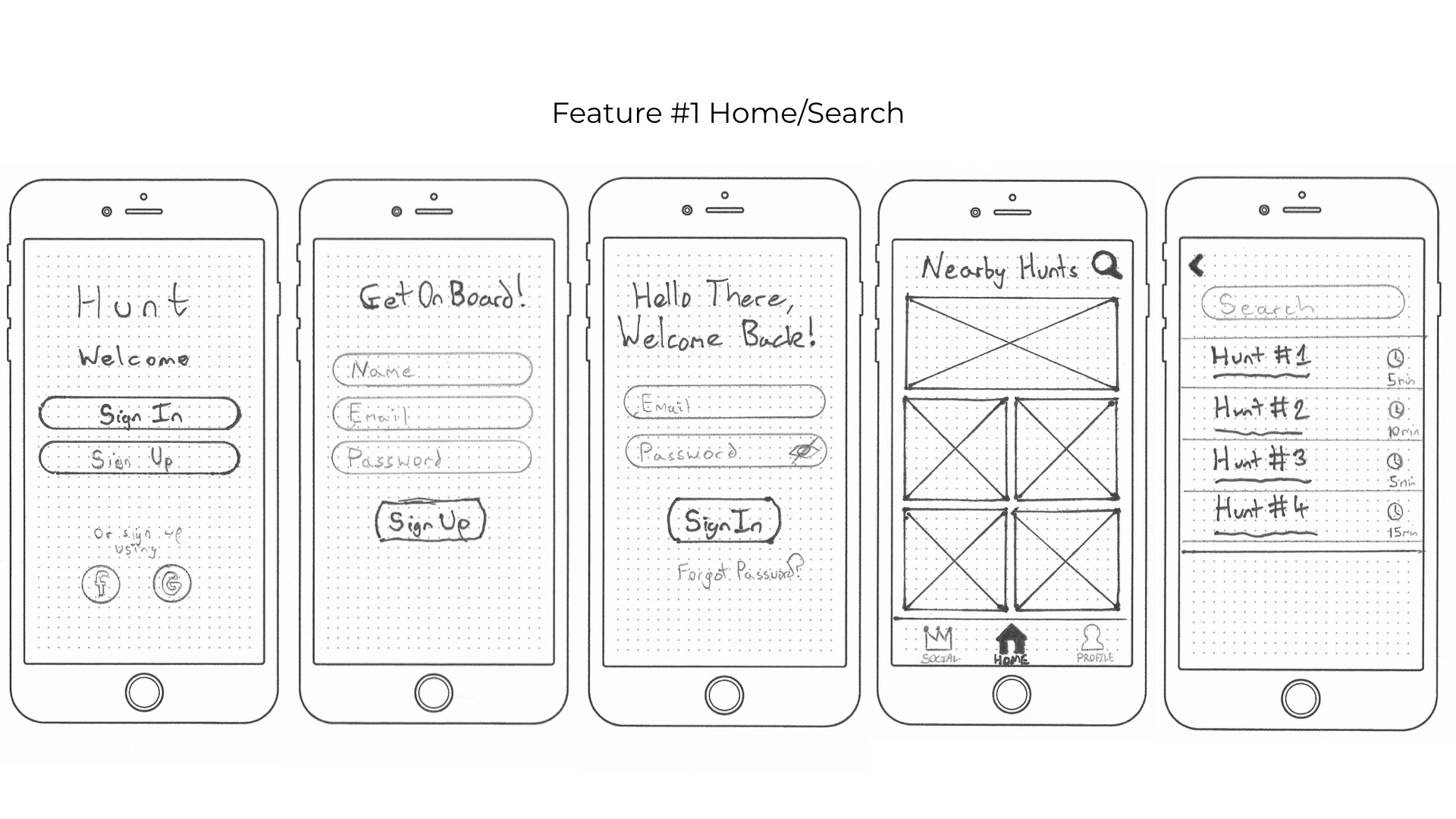
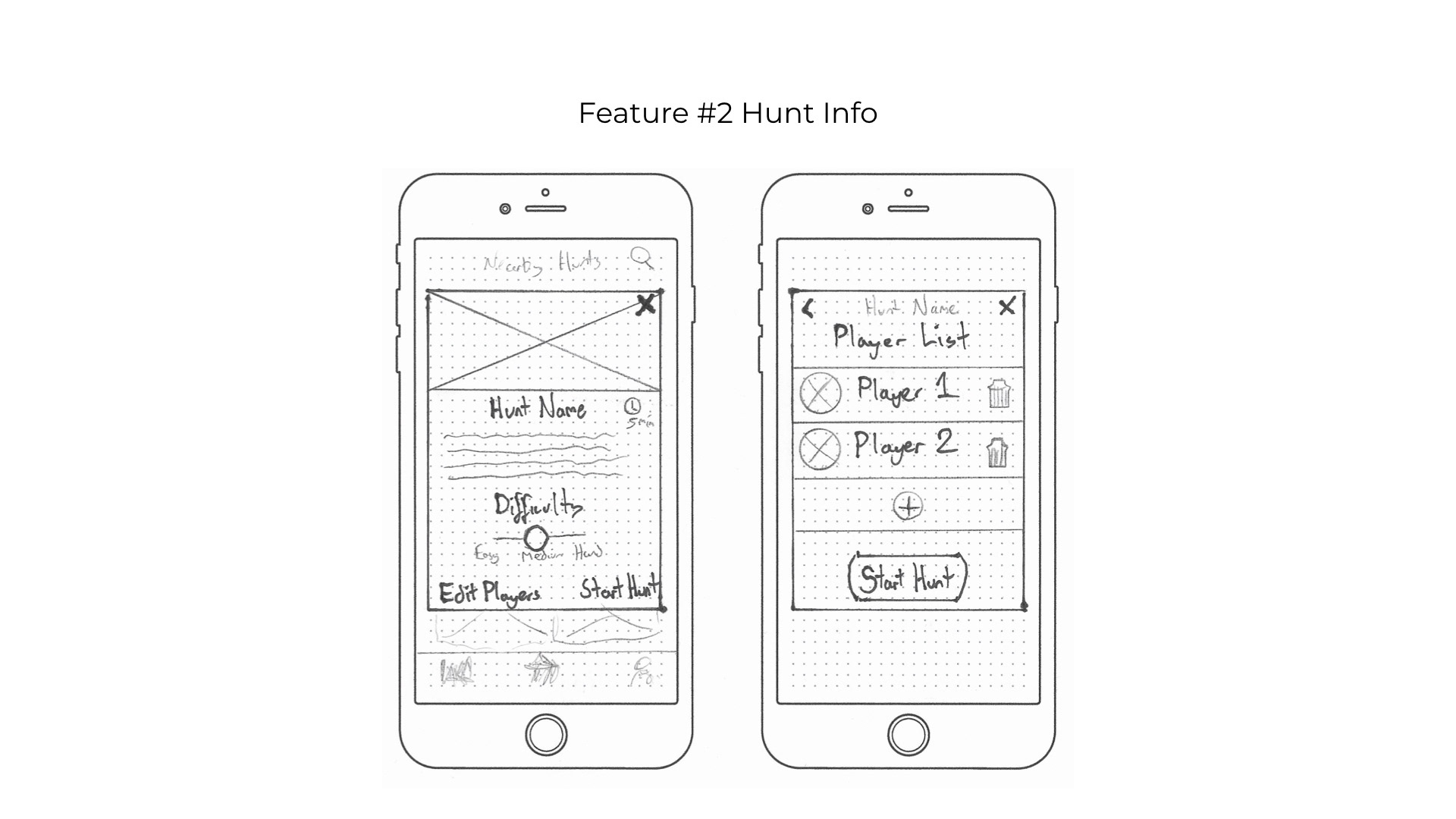
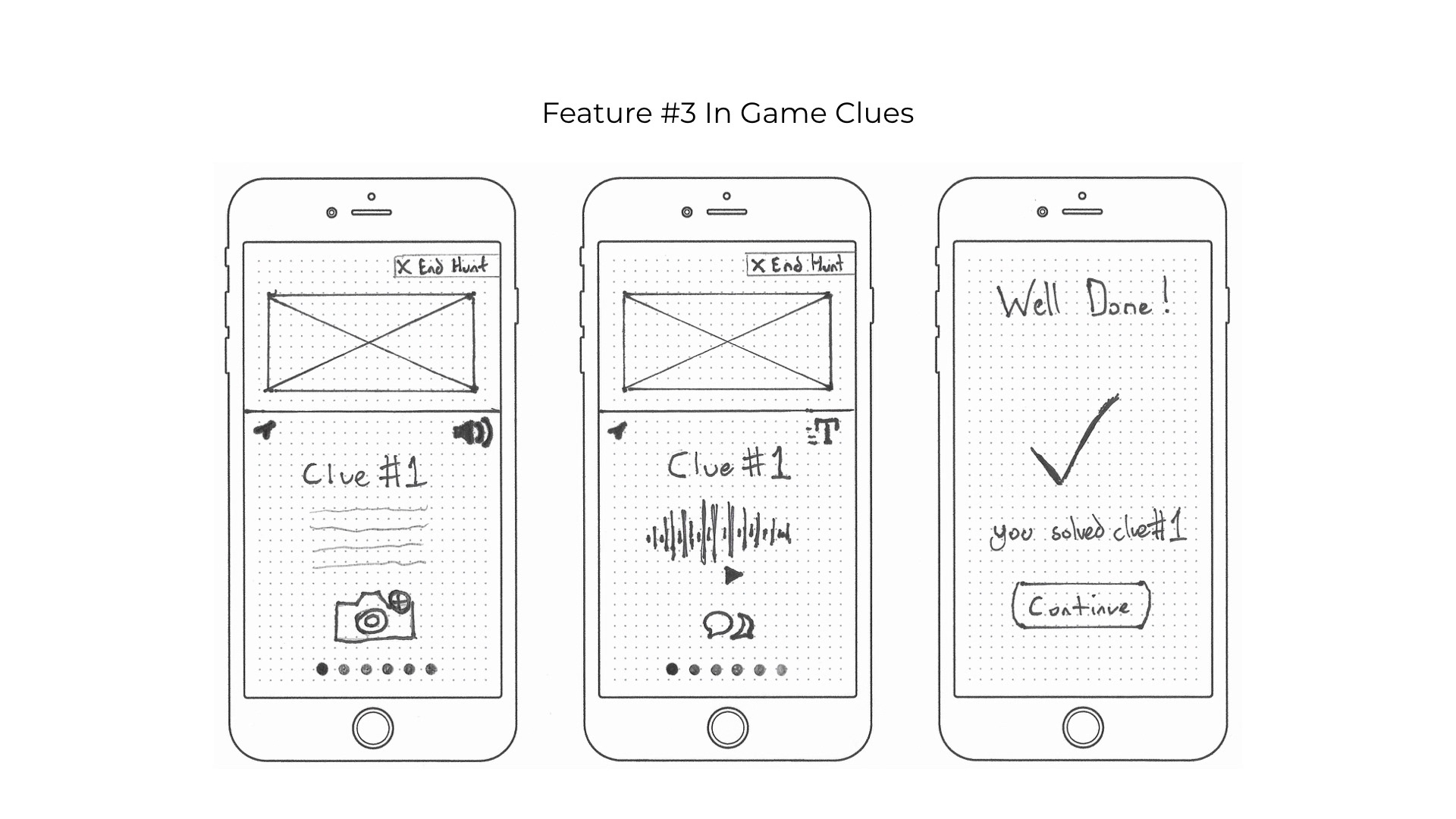
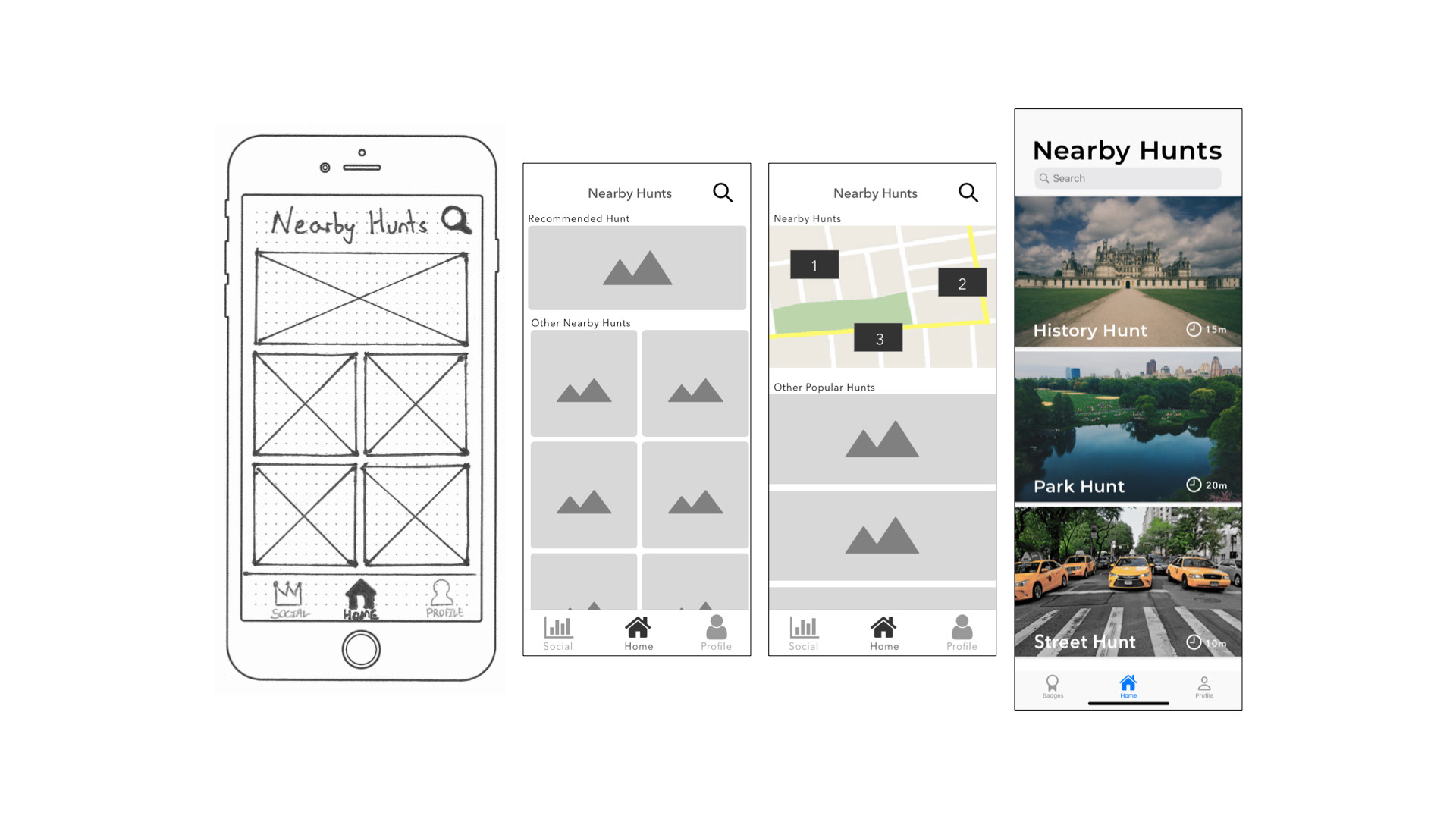
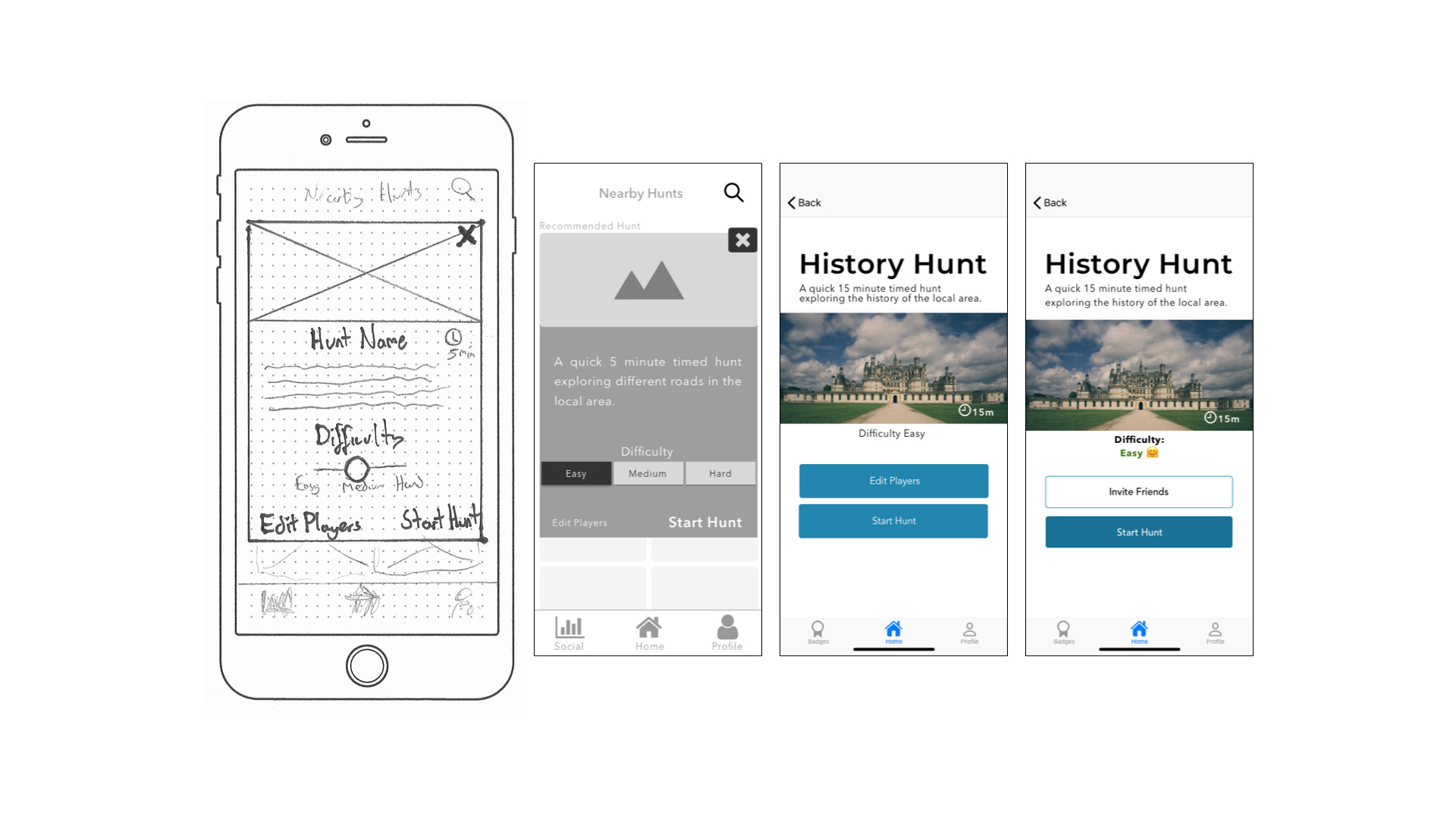
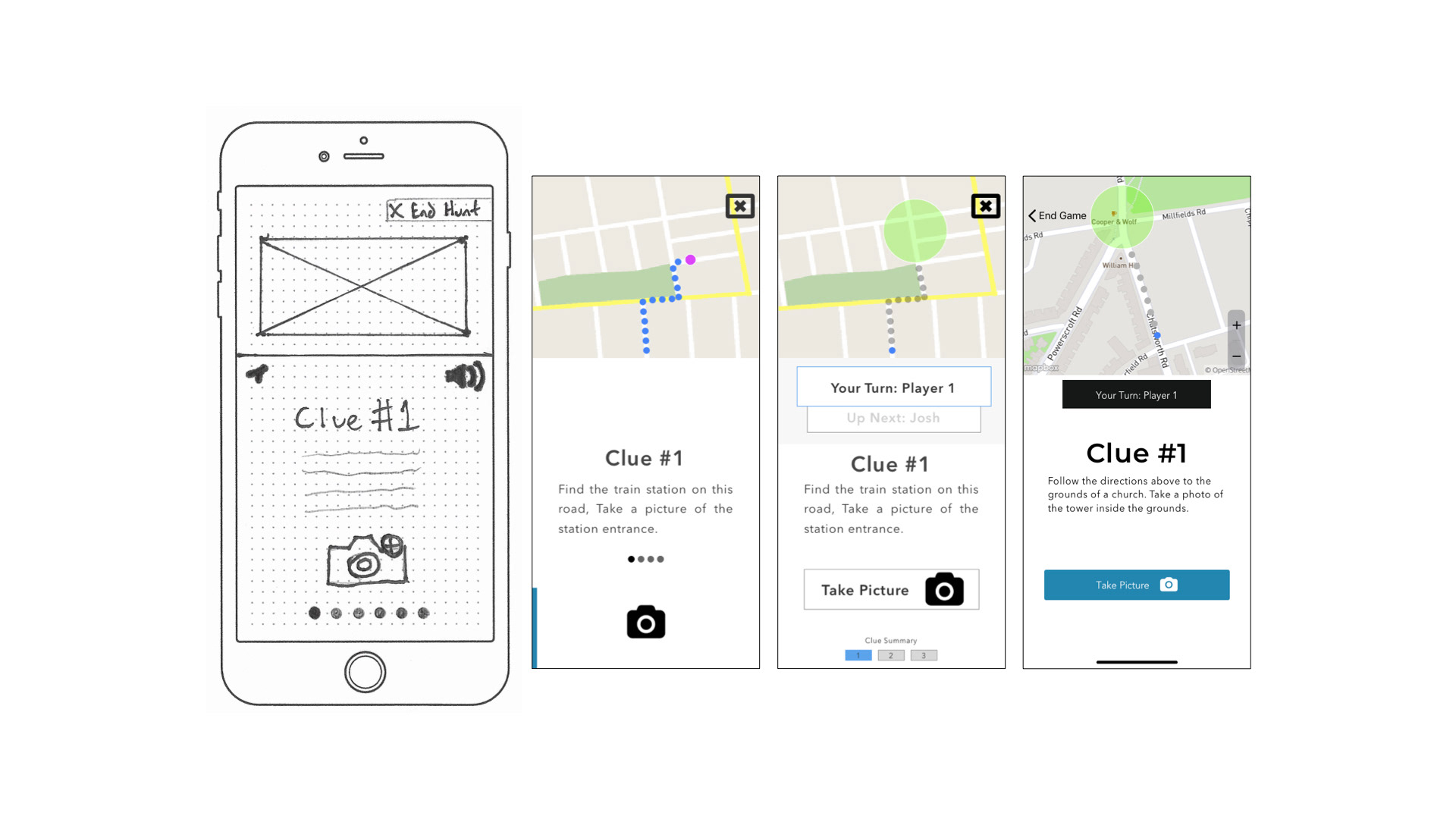
User Testing
User testing helped me to understand which parts of my design was working and which parts were not working. It was a challenge for me to keep quiet during testing when I noticed errors before the users, a lesson I can take from this is to perform the user testing task myself more vigorously before putting them in front of users. I also did not make changes in between the tests which meant that multiple users experienced the same errors. I've learned that it is better to test little and often rather than to wait to make changes. There were two user testing issues in particular that I have highlighted here.
- Users were unsure when a friend had been added
All 6 participants were unsure if they had completed the task of adding a friend & there was lots of confusion
To solve this problem, I included a bar above the in-game clues that indicates when another player has been added and you are playing with them.
- Users went straight through the clues without submitting any answers
1/3 of users tested were not clear if they had to submit anything during the first clue screen
To solve this issue I made the 'Take Picture' CTA button much clearer, and removed the option to swipe through clues.
Final Mockups
Next Steps
HUNT was a rewarding project to work on, and I learnt a great deal during the process, to take this even further I would look at the following next steps.
- Save & Continue
Many users expressed a desire during testing to save a HUNT and come back to it at a later stage.
- Re-iterate visual design
Many aspects of this project are quite minimalist and I would like to explore a re-design with more colour and personality.
- Better multiplayer functionality
The multiplayer functionality is something I would like to evolve further and perform more tests with users playing together at the same time.